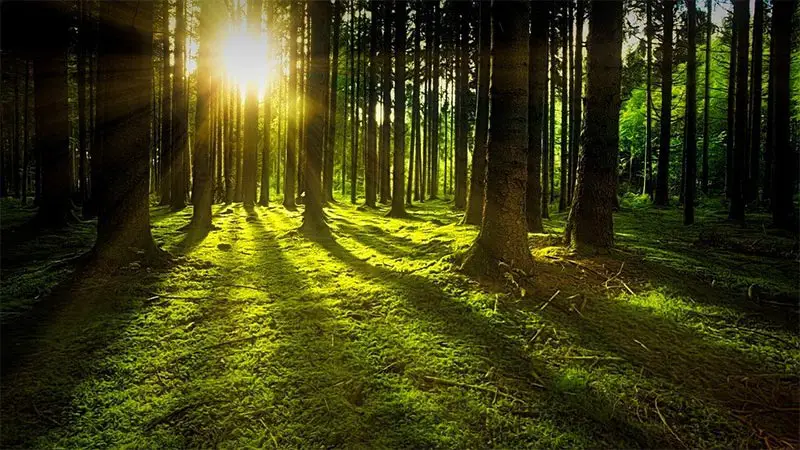What Temperature Is Too Hot For Bonsai?
Despite their miniature size, bonsai are trees in every sense of the word, and they grow best when the conditions in which they are kept closely mimic their natural environment.
Like many plants, bonsai will tolerate a fluctuation in temperature, but there’s a point at which they’ll cease to grow and begin to decline. This point will depend on where the plants originated. A plant, whose origin is a temperate climate, will not be happy in tropical temperatures, and vice versa, a tropical plant will not appreciate a long, dark, cold winter.
The place to start is to understand the environment from which your plant originated and then try to replicate it as closely as possible.

Temperature Ranges
Most trees, including bonsai, are comfortable in a range of temperatures and are happiest between 70°F to 85°F (20°C to 30°C). Outside of this range, trees become highly stressed, and at 113°F (45°C), death can occur.
You may think that temperatures around your home will not reach the upper limit, but bear in mind where your bonsai are placed. Gravel, concrete, and metal all radiate prodigious amounts of heat, so an enclosed courtyard surrounded by a wall and having a gravel floor may well reach 113°F (45°C) on a hot mid-summer day.
Trees can cool themselves very well provided they have sufficient water available. Water is released when the stomata in the leaves open, effectively cooling the tree using transpiration. If the plant does not have access to water, the stomata will close to stop losing the water it has. This effectively retains moisture but also retains heat, so ensure your bonsai are adequately watered during hot spells.

Tips For Managing Heat In Your Bonsai:
Outside Trees:
- People that live in the temperate regions of the world will find that trees that originate from the same area will see their trees grow exceptionally well outside as the environmental conditions will be similar.
- If your weather dishes out spikes during summer of around 30°C, then there is no need to do much more than place the trees close together in dappled shade. Plants placed close together cool one another using transpiration.
- Place them on grass or bark as this will be cooler than on gravel or concrete.
- However, folk that live in tropical climes will need to take extra care of their temperate trees in the height of summer. Ensure that in the hottest part of the day (11:00 am – 3:00 pm), the trees are in the shade and are well watered.
- A 30% shade cloth cover will be ideal, reducing both the reflected and ambient heat. Install misters that use little water but reduce the temperature under the shade cloth and monitor the temperature constantly.
- Be careful of misting your trees during the hottest times of the day. Water droplets on the leaves can act like tiny prisms and concentrate the light, causing burns.
Indoor Bonsai
- Trees kept indoors will need careful monitoring as the amount of sunlight coming through a window can significantly increase the temperature around your plants.
- If the temperature rises too much, move the plant away from the window to reduce the radiant heat.
Roots
- The ground surface of a pot placed in full sunlight can quickly rise to over 130°F (55°C). This will result in the death of the upper roots, which will create further problems. The plant will not be able to take up sufficient water, and the dead roots may become home to pathogens and cause disease.
- Look at changing the color of the pots. Dark-colored pots may look very elegant when showing a bonsai, but they can attract a considerable amount of heat, stressing the roots of your tree. Instead, swap to light-colored or white pots, even if you place your black pot inside a white one.
- It will also help to sink your pots into a deep bed of bark or straw to help keep the roots cool.
- Reduce the amount of concrete, metal, and gravel around your trees. The heat radiated from these materials can significantly push up the ambient temperature around the plants.
Water and Feed
- Reduce the amount of nitrogen-rich fertilizer given to the plants. Processing nitrogen is physiologically demanding on the plant, so reduce or eliminate nitrogen-rich feeds during times of high temperatures.
- Ensure your bonsai trees are adequately watered, especially during temperature spikes. Rather than simply watering on the top of the ground, dunk the entire pot in water. This ensures that the water reaches the middle of the root ball and doesn’t just wet the top of the ground.
We have a detailed bonsai tree care guide with all the relevant information. Check the guide out here!

Monitor the temperature
- There are many instruments that you can use to monitor the temperature of your plants. Many of these mini-weather stations will send an alert to your phone if the temperature exceeds an upper limit, alerting you that action needs to be taken to protect your plants.

Conclusion
Heat, as much as cold, can cause severe problems for your trees. To ensure that your trees come through the hottest times of the year with no damage, you will need to monitor them carefully and take action a the first signs of stress.






